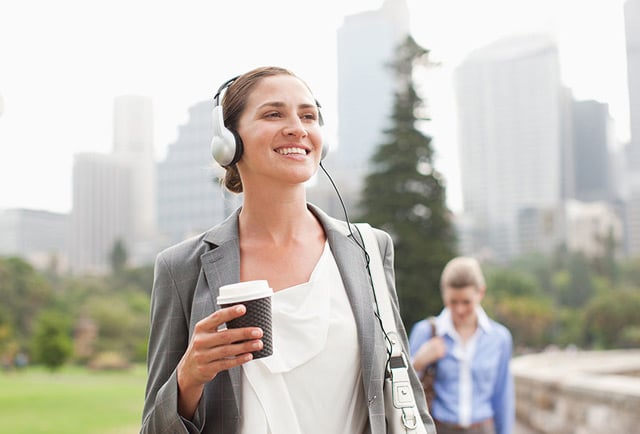- 3 Minute Read
- 11th May 2021
Flexible workspaces offer a lifeline for workers facing WFH burnout
Prolonged enforced working from home is taking a heavy toll on our mental and physical health. If you’re experiencing increased anxiety, disrupted sleep patterns and developing unhealthy habits, you could be suffering from “working from home (WFH) burnout”. In this article we look at what WFH burnout is, how to recognise it and what you can do about it. We explore how flexible workspaces can play a key role in combatting this negative legacy of lockdown.
What is WFH Burnout?
It’s well documented that during the pandemic, stress and anxiety levels are sky-high. In a 2018 survey The Mental Health Foundation found that 74% of UK adults had felt so stressed at some point over the year that they felt overwhelmed or unable to cope. The pandemic has greatly amplified these issues and according to Forbes 69% of employees are experiencing burnout symptoms while working from home.
However, stress does not only manifest itself in our mental health, it is also linked to physical health problems like heart disease, problems with our immune system, insomnia and digestive problems.
"Burnout isn’t a clinical diagnosis under Diagnostic and Statistical Manual of Mental Disorders (DSM) criteria, but it is a well-known concept in the world of psychology with symptoms including increases in anxiety, low mood, difficulty coping, and health issues.” says Psychotherapist Owen O’Kane, author of the best-seller, “Ten Times Happier”.
The Tell-Tale Signs of WFH Burnout
- Mood Changes - If you notice changes in mood ranging from irritability, demotivation, sadness or more regular outbursts of anger, this could indicate that your coping strategies are low and your possibly experiencing burnout.
- Increased Anxiety - Worry is a key symptom of anxiety which is often seen with burnout. If you are worrying about many things and your mind is overloaded, then it’s time to slow down and view your anxiety as a warning sign of potential burnout.
- Changes in Sleep Patterns – Most of us need 7-8 hours sleep per day. Difficulty falling asleep, staying asleep or waking up earlier than normal could be another sign of burnout.
- Withdrawing from everyday life - This can present itself in a number of ways ranging from loss of interest in life to avoiding people. There is a risk that increased time at home and lack of routine makes it more difficult to engage in life.
- Unhealthy Habits - Burnout is uncomfortable with many difficult feelings. It is normal to numb or soothe these feelings with unhealthy habits like increases in alcohol consumption, drugs, medication, food, or excess shopping.
- Declining physical health - When ‘burnout’ starts to manifest it will result in detrimental changes in general health. Issues such as headaches, high blood pressure, gastric problems and cardiovascular problems have all been linked.

Great Ways To Combat WFH burnout
Experts agree that there are a number of self-help ways to combat the effects of WFH burnout. Breaking up your routine and discovering new interests and habits will make life more interesting. Getting as little as 10 minutes exercise each day can boost those important serotonin levels. Talking to someone you trust can help you deal with your emotions and spending some time outdoors with nature will increase endorphins and help you feel better. Most important of all is to ask for help if you are struggling, it’s a sign of strength, not weakness.

Swap Your Dining Room Table For a Flexible Workspace
If you are seeking a practical solution that gets to the root cause of WFH burnout, then utilising a flexible workspace could be the answer.
Flexible workspaces take many forms, from hot desks and coworking spaces through to serviced offices and fully managed private offices. A flexible office is work ready, with a raft of services and amenities (IT, Communications, Furniture, Meeting Rooms, Security) supplied, all available for rental, short or long term. Flex offices are fulfilling a need for companies who want to offer employees a “third place” to work. Local flexible offices are being used as an alternative to permanent working from home and avoid the need to commute long distances to a city centre HQ.
Unlike the home dining room, a flexible office is a purpose-built office environment where you can work seamlessly and productively. The shared community aspect of many flexible offices is a lifeline for those workers who crave social interaction and collaboration. Water cooler conversations and face to face meetings have never been so valuable.
Flexible office providers are keen to combat the expected fallout from extended periods of working from home. As well as being up to date on the latest safety guidelines at the workstations themselves, many flexible workspace operators provide COVID-19 secure wellness and health programmes to help keep residents’ minds healthy as well as their bodies.
Take a look at the fabulous flexible workspaces available today and you might find it’s the best antidote for WFH burnout.
